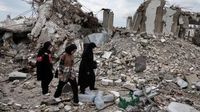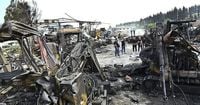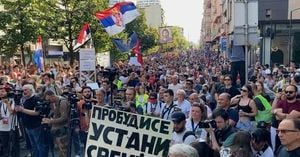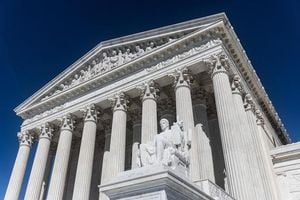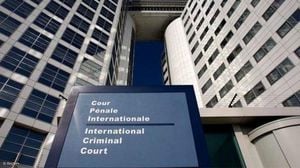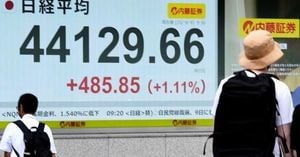On Monday, September 8, 2025, a sudden and deadly escalation broke the uneasy calm in northeastern Lebanon. Israeli warplanes launched a series of airstrikes targeting the Hermel outskirts and the Beqaa Valley, regions that had, until now, largely escaped the violence that has plagued Lebanon’s southern border since the last major conflict. According to the Lebanese Ministry of Health, five people were killed and five wounded in the attacks, with officials and sources confirming that four of the dead were members of Hezbollah, Lebanon’s powerful and controversial militant group.
The strikes hit areas around the towns of Halabta and Harbata, as well as the al-Zughrin and al-Sharbin regions, all nestled in the western mountain range of Hermel and the fertile Beqaa Valley. These locations, far from the heavily militarized border with Israel, have rarely been the focus of such intense military action. As reported by AP and corroborated by local sources cited in Shafaq News, the attacks marked a sharp departure from the near-daily Israeli strikes in southern Lebanon that have continued since the U.S.-brokered ceasefire last November.
Israeli military spokesperson Avichay Adraee stated that the airstrikes were aimed squarely at Hezbollah positions, specifically targeting camps and infrastructure belonging to the group’s elite Radwan Forces. "The strikes targeted Hezbollah positions, including camps belonging to the Radwan Force, Hezbollah’s special forces. Hezbollah fighters were observed inside these locations, which were also used to store weapons," Adraee said, as quoted by Shafaq News and echoed by The Express.
Lebanon’s Ministry of Health confirmed the casualties, noting that five people had lost their lives and five more were injured. A Hezbollah official, speaking on condition of anonymity due to the sensitivity of the matter, confirmed to AP and The Express that four of the dead were indeed members of the group. The Lebanese presidency, in a statement posted to social media and reported by Shafaq News, condemned the attacks, calling them a grave violation that resulted in the deaths and injuries of Lebanese citizens.
These air raids shattered a period of relative calm in the Beqaa Valley, a region that had not experienced such attacks in recent months. The strikes, at least eight in total according to Lebanese state media, are the latest in a long series of ceasefire violations since the formal truce took effect on November 27, 2024. The United Nations peacekeeping mission UNIFIL has documented more than 4,800 Israeli violations since then, resulting in over 235 deaths and 480 injuries, including women and children, as detailed by Shafaq News.
For many in Lebanon, the renewed violence is an unwelcome reminder of the devastating conflict that erupted in October 2023. That war, which began when Hezbollah fired rockets and artillery into Israel in solidarity with Hamas after the start of the Gaza war, quickly escalated. Israel responded with massive airstrikes and, by September 2024, had invaded southern Lebanon. The fighting eventually claimed more than 4,000 lives and wounded nearly 17,000 people, causing billions of dollars in damage and leaving scars that have yet to heal, as chronicled in The Express and AP.
Since the November ceasefire, Israel has justified its continued operations in southern Lebanon as necessary to target Hezbollah’s military infrastructure. However, the attacks in Hermel and Beqaa—so far from the border—are unusual. According to AP, such strikes near Syria are rare, raising questions about whether the conflict could be spreading or entering a new phase.
Meanwhile, the political landscape in Lebanon is shifting. Earlier this month, the Lebanese government backed a military-drafted plan to gradually disarm Hezbollah, a move that has been met with both domestic and international scrutiny. The government, however, has made it clear that it opposes any direct confrontation with the group. As reported by AP, the plan reflects mounting global pressure to rein in Hezbollah’s military capabilities, but also the political realities on the ground, where the group maintains significant influence and support.
Hezbollah, for its part, has not fired at Israel since the ceasefire. The group maintains that it no longer has an armed presence south of the Litani River, a key demand of the ceasefire agreement. However, it refuses to discuss disarmament until Israel halts its attacks and withdraws from five hilltop positions it captured during the war. As a Hezbollah spokesperson, speaking anonymously to AP and The Express, put it: the group will not consider giving up its arms "until Israel stops its attacks and withdraws from five hilltop points that it captured during the war."
This impasse underscores the deep mistrust and unresolved grievances that linger on both sides of the border. For Israel, the threat posed by Hezbollah’s arsenal and its alliance with Iran remains intolerable. For Hezbollah and many Lebanese, Israeli military actions are seen as ongoing aggression and occupation, fueling a cycle of violence and retaliation.
Adding another layer of complexity, the same day as the Hermel and Beqaa strikes, Israeli warplanes also carried out airstrikes on neighboring Syria’s central province of Homs, according to Syrian state media. Later that night, pro-government media outlets reported further Israeli attacks on a military post in the coastal province of Latakia. While the Israeli military did not immediately comment on these operations, AP noted that Israel has conducted hundreds of airstrikes in Syria since the fall of President Bashar Assad’s government in December, destroying much of the Syrian army’s assets.
Back in Lebanon, the civilian toll of the conflict remains high. The November ceasefire was intended to bring relief to communities battered by months of fighting, but the reality has been far more complicated. As UNIFIL’s data show, the violence has continued in fits and starts, with civilians often paying the highest price.
As the dust settles over Hermel and the Beqaa Valley, many Lebanese are left to grapple with the uncertainty of what comes next. The government’s cautious approach to Hezbollah’s disarmament, Israel’s ongoing military campaign, and the specter of renewed conflict all hang in the balance. For now, the hope for lasting peace remains elusive, overshadowed by the grim tally of casualties and the ever-present risk of further escalation.
